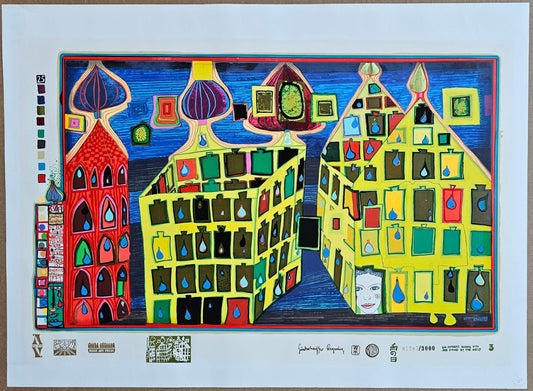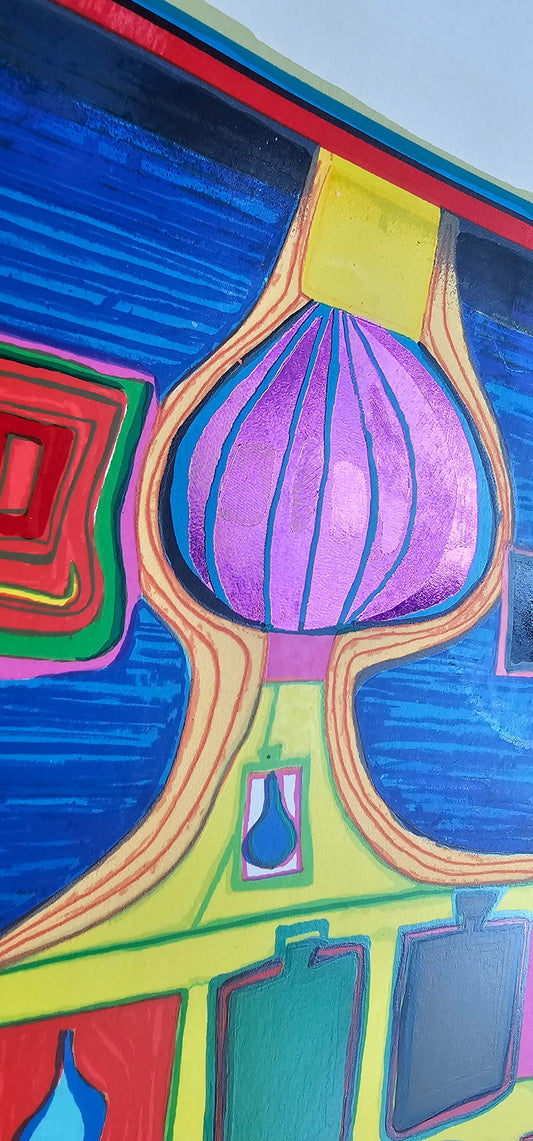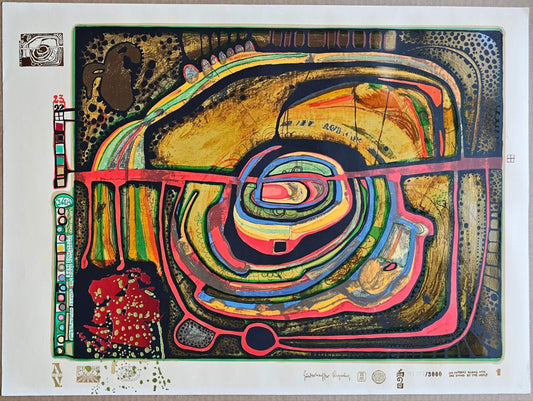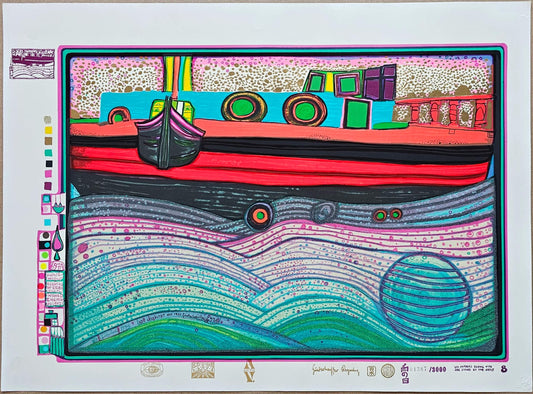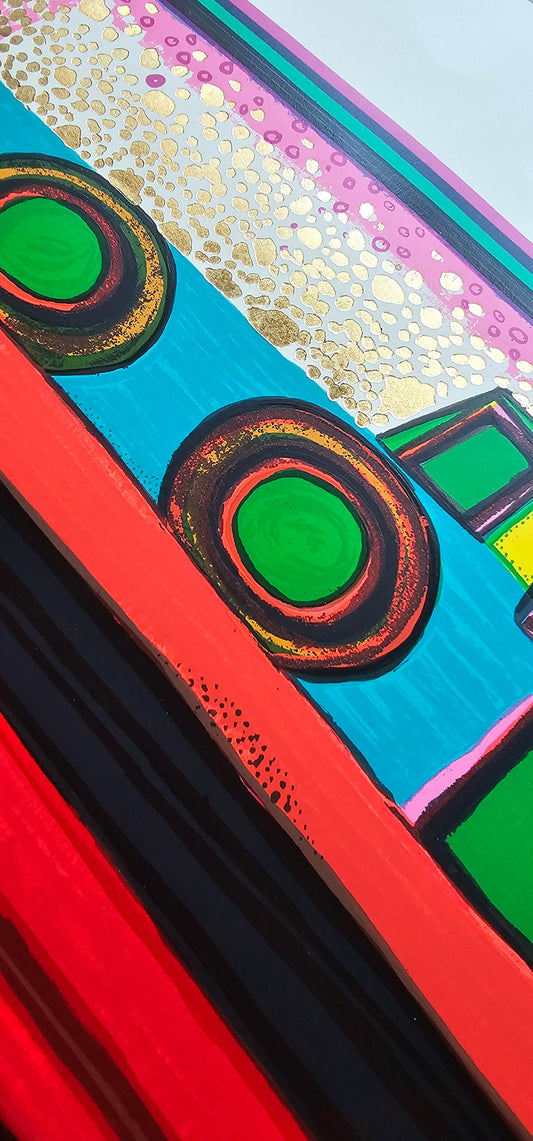Collection: Friedensreich Hundertwasser
Austrian artist and architect Friedensreich Hundertwasser is celebrated for his vibrant, organic paintings and visionary ecological architecture. His art prints—bursting with spirals, bold colors, and symbolic forms—remain highly sought after, embodying his philosophy of harmony between humanity and nature.
Born in Vienna in 1928, Hundertwasser briefly studied at the Fine Art Academy and was influenced by the Vienna Secession, Egon Schiele, and Gustav Klimt. His early travels across Europe and collaborations with artists like René Brô helped shape his shift toward abstraction and symbolism.
By the 1950s, his iconic spiral motif emerged, expressing the cycle of life. He developed “transautomatism,” a theory inviting the viewer’s imagination to complete the work. His first solo exhibition took place in Vienna in 1952.
In parallel with painting, Hundertwasser began his radical critique of modern architecture, advocating for structures that reflect individuality and ecological responsibility. He called buildings the “third skin” and believed everyone should shape their own space.
In later years, Hundertwasser expanded into printmaking, designing stamps, flags (including the famous Koru Flag), and posters. A prolific creator, he participated in major international exhibitions, including the Venice Biennale and Tokyo International Art Exhibition.
He spent his final years in New Zealand, continuing his architectural experiments. He died in 2000 aboard the Queen Elizabeth II, leaving behind a legacy of joyful rebellion against the sterile and uniform.

